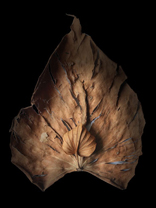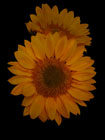 |
Mindful Empathy Exercises
|
 |
| |
You can do this on a walk or just outside or inside it really doesn't matter but I have found for me it works best outside unless you are empathizing with a person, in which case it doesn't matter where you do it.
Go outside or whatever place works for you, and pick a tree, a plant, or some other natural object and Empathize with it, that is Feel the way it feels to feel that way. Again this is a FEELING not a thought. You might go to the extreme of moving your body into a shape that is similar to your subject or just imagine with a sense of feeling yourself being that object. Look at the object from as many ways as possible such as
-
color.
-
Is it rough or smooth?
-
Is it reflective or matte?
-
Is it opaque or transparent or translucent?
-
Is it flexible or rigid?
-
What other qualities might it have?
Remember this is not about making judgments. Things are what they are. You may not like some of the qualities but they basically are not good or bad. We are the ones that designate good or bad to things. Also don't look at these qualities as just words that describe something, it's not about the words, but how do they feel to you, it's all about the feelings? Try to feel the whole object in your gut, in all of your body. You might even tense the muscles that you might use to wrap you arms around the object to lift it up. As you tense you muscles look at the object and visualize yourself wrapping your arms around the object without touching it. What was your experience of doing this?
You might ask yourself, if my skin had that texture and color what would it look like? What would it feel like? Can you visualize what you would look like if your skin looked like that? Now visualize yourself as your object. Feel how it feels.
You can set aside some time to do this on a regular basis or you can do it anytime the thought strikes you. If you just do one think, it only takes less than a minute. It's a great way to get yourself grounded when you've been in your head for a long while.
Mindfully Empathizing with another person is a great practice. You can do it anywhere where there is another human being. Everyone's heard of body language. That's when you empathize with the way a body feels in terms of how one is carrying himself. We all have the same body parts but how they relate to each other and how they feel to us can tell an infinite number of storied. When you're feeling tired and when you're feeling very energetic, will express itself in how your body looks and arranges itself. Our emotions are always going to express themselves through the body and in our face.
Judging might be a harder thing to avoid with this mindful exercise, but try hard not to be judgmental here. If it becomes necessary to act being judgmental may become necessary but otherwise it's not appropriate here.
You can do this anywhere there are people. You can do it very quickly looking at just body language and facial expressions or you can take some time with each individual and get a more complete picture of the person you are empathizing with. How does this persons body feel to you? If your body felt like that how do you think you would be feeling? What about the face, the eyes? How do they feel to you and what are those feelings? You can carry this to whatever depths you wish. It's all good.
|
|
 |
Mindful Empathy and Art |
 |
| |
You can empathize with works of art. All Art through the ages always has expressed the culture and values of the time. Anything we do will always reflect our values and beliefs. Introducing one culture into another will be the death of both cultures. It is inevitable. Form has meaning, most art uses form, so most art has meaning.
If I told you the lines below are calm and quiet what would you say?
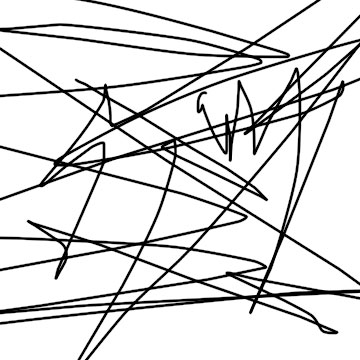
Quiet and Calm?
On the other hand, if I said the lines below are wild and energetic, what would you say?
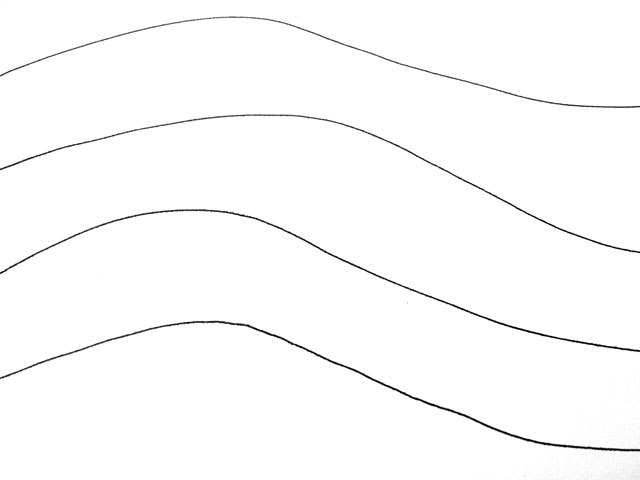
Wild and Energetic
Whether or not you realized it or not you used your mindful empathy to see that what I said about the above lines was all wrong, and you probably came up with a more accrete observation as to the kind of lines that are in these two images. Let's look at some more complex examples to empathize with.
Abstract art is a good place to start our mindful empathy. Since we often struggle to step away for our interest in identifying things and relating them to our past experiences which tends to move us away from the mindful experience of the present moment and the things around us. One stumbling block in empathizing with an abstract work of art is that it bores the part of us that wants to do its job of identifying things we know and making relationships between them. Abstract art is what it is. It's only meaning is in its form and empathy is the only way we can extract this meaning. You might want to look at the Magic Eye pictures to see how looking at something in a different way than the way you normally do allows you to glean more information, information you could get in no other way. On a day to day bases empathy is a tool we have to glean information that we might not get in any other way. What we allow ourselves to focus on can make a big difference in how we perceive the world.
Of course you can find your own abstract art to try this on but I am going to make a couple of suggestions to get you started. In addition I am going to group these works up in such a way that it might help you to see how different shapes can create differ meaning and feelings.
Lets start off with looking at Jackson Pollock and Piet Mondrian. Try to empathize with these paintings individually before you compare the two. Remember this is a feeling thing. Empathy is to feel the way it feels to feel that way.

Jackson Pollock
and

Piet Mondrian
I picked these two paintings because they are very opposite in many ways. This might help you to focus in on the empathic feelings each painting has to offer that you may have missed.
If this was difficult for you, you might try this next offering. It offers some things you can identify as eyes, mouth, feet, etc.
Let's look at Willem de Koonig:

Willem de Koonig
How do these forms make you feel when you Mindfully empathize with them? Calm, happy, how does this make you feel? Again this is what it is. It may not be your cup of tea but judgment must be postponed until we give this a chance and really explore the feelings involved and perhaps what they might mean in relationship to the subject matter.
Lets try these paintings, Robert Motherwell and Frank Stella:

Robert Motherwell

Frank Stella
Here are another group of paintings to mindfully empathize with, Morris Louis and Mark Rothko. These may be a little bit more challenging:

Morris Louis

Mark Rothko
Some of the feelings in these paints are not feeling we are normally consciously notice. Again there is not much to identify in these painting either. So they may present a challenge to you. See if you can sort out how it would feel to feel that way. |
|
| |
Let's look at two artists that were very interested in expressing inner human experiences - Leonardo da Vinci and Rembarndt:

Leonardo da Vinci
Look at each of the figures and feel how it feels to feel that way. What are the differences between these 3 figures? When we look at the child, we see a child being a child and looking to his mother to see what her concerns are. When looking at the mother, we see a mother being a mother, having motherly feeling as she reaches lovingly to pull the child back from the lamb. The woman behind the mother is looking down knowingly at the scene, perhaps she has been a mother as well.
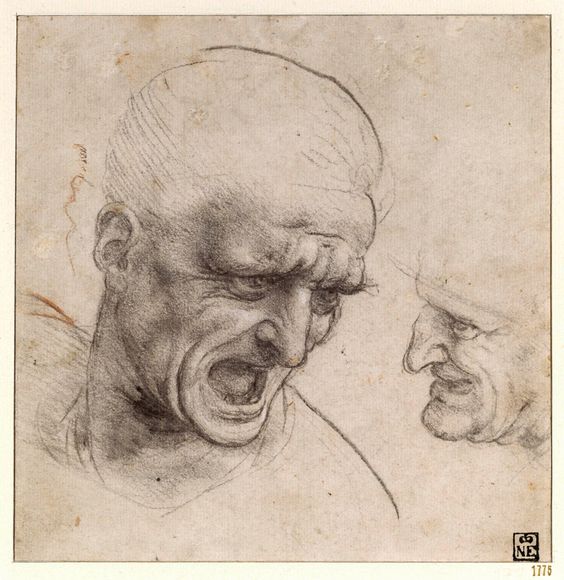
Leonardo da Vinci
Feel how the forms that make up this man all work together to strongly express the inner emotions of these men.

Rembrandt
How are these people experiencing this event? How does the body language add to the expressive feelings of each person?

Rembrandt
Here we have a scene similar to the Leonard above, a scene that shows the interrelationships of a family. Each person in this scene emits strong feeling. What are the different feeling you experience when looking at this painting?
|
|
| |
|
|
| |
|
|
| |
|
|
| |
|
|
| |
|
|
| |
|
|
| |
|
|
| |
|
|
| |
|
|
| |
|
|
| |
|
|
| |
|
|
| |
|
|
